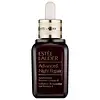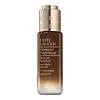What's inside
What's inside
 Key Ingredients
Key Ingredients

 Benefits
Benefits

 Concerns
Concerns

 Ingredients Side-by-side
Ingredients Side-by-side

Water
Skin ConditioningBifida Ferment Lysate
Skin ConditioningMethyl Gluceth-20
HumectantPEG-75
HumectantBis-PEG-18 Methyl Ether Dimethyl Silane
EmollientButylene Glycol
HumectantPropanediol
SolventCola Acuminata Seed Extract
Skin ConditioningHydrolyzed Algin
Pantethine
EmollientCaffeine
Skin ConditioningLecithin
EmollientTripeptide-32
Skin ConditioningEthylhexylglycerin
Skin ConditioningSodium Rna
Skin ConditioningBisabolol
MaskingGlycereth-26
HumectantSqualane
EmollientSodium Hyaluronate
HumectantOleth-3 Phosphate
Caprylyl Glycol
EmollientLactobacillus Ferment
Skin ConditioningOleth-3
EmulsifyingOleth-5
EmulsifyingAnthemis Nobilis Flower Extract
MaskingYeast Extract
Skin ConditioningCholeth-24
EmulsifyingHydrogenated Lecithin
EmulsifyingCeteth-24
CleansingTocopheryl Acetate
AntioxidantEthylhexyl Methoxycinnamate
UV AbsorberHexylene Glycol
EmulsifyingCarbomer
Emulsion StabilisingTriethanolamine
BufferingTrisodium EDTA
BHT
AntioxidantXanthan Gum
EmulsifyingPhenoxyethanol
PreservativeCI 14700
Cosmetic ColorantCI 19140
Cosmetic ColorantWater, Bifida Ferment Lysate, Methyl Gluceth-20, PEG-75, Bis-PEG-18 Methyl Ether Dimethyl Silane, Butylene Glycol, Propanediol, Cola Acuminata Seed Extract, Hydrolyzed Algin, Pantethine, Caffeine, Lecithin, Tripeptide-32, Ethylhexylglycerin, Sodium Rna, Bisabolol, Glycereth-26, Squalane, Sodium Hyaluronate, Oleth-3 Phosphate, Caprylyl Glycol, Lactobacillus Ferment, Oleth-3, Oleth-5, Anthemis Nobilis Flower Extract, Yeast Extract, Choleth-24, Hydrogenated Lecithin, Ceteth-24, Tocopheryl Acetate, Ethylhexyl Methoxycinnamate, Hexylene Glycol, Carbomer, Triethanolamine, Trisodium EDTA, BHT, Xanthan Gum, Phenoxyethanol, CI 14700, CI 19140
Water
Skin ConditioningBifida Ferment Lysate
Skin ConditioningPEG-8
HumectantButylene Glycol
HumectantGlycerin
HumectantPolysorbate 80
EmulsifyingBis-PEG-18 Methyl Ether Dimethyl Silane
EmollientTripeptide-32
Skin ConditioningHydrolyzed Yeast Protein
Skin ConditioningLactobacillus Ferment
Skin ConditioningSodium Hyaluronate
HumectantCaffeine
Skin ConditioningHypnea Musciformis Extract
Skin ProtectingCitrullus Lanatus Fruit Extract
Skin ConditioningLens Esculenta Fruit Extract
Skin ConditioningPyrus Malus Fruit Extract
Skin ConditioningMagnolia Grandiflora Bark Extract
AntimicrobialPolygonum Cuspidatum Root Extract
AntioxidantPoria Cocos Sclerotium Extract
AstringentSilybum Marianum Extract
Skin ConditioningSapindus Mukorossi Fruit Extract
Skin ConditioningAnthemis Nobilis Flower Extract
MaskingSodium Lactate
BufferingEthylhexylglycerin
Skin ConditioningPotassium Gluconate
Skin ProtectingSodium PCA
HumectantCaesalpinia Spinosa Gum
Skin ConditioningSucrose
HumectantCaprylyl Glycol
EmollientHexylene Glycol
EmulsifyingCarbomer
Emulsion StabilisingXanthan Gum
EmulsifyingPPG-6-Decyltetradeceth-30
EmulsifyingPPG-5-Ceteth-20
EmulsifyingBHT
AntioxidantDisodium EDTA
Sodium Hydroxide
BufferingPotassium Sorbate
PreservativePhenoxyethanol
PreservativeSodium Benzoate
MaskingCI 14700
Cosmetic ColorantCI 19140
Cosmetic ColorantWater, Bifida Ferment Lysate, PEG-8, Butylene Glycol, Glycerin, Polysorbate 80, Bis-PEG-18 Methyl Ether Dimethyl Silane, Tripeptide-32, Hydrolyzed Yeast Protein, Lactobacillus Ferment, Sodium Hyaluronate, Caffeine, Hypnea Musciformis Extract, Citrullus Lanatus Fruit Extract, Lens Esculenta Fruit Extract, Pyrus Malus Fruit Extract, Magnolia Grandiflora Bark Extract, Polygonum Cuspidatum Root Extract, Poria Cocos Sclerotium Extract, Silybum Marianum Extract, Sapindus Mukorossi Fruit Extract, Anthemis Nobilis Flower Extract, Sodium Lactate, Ethylhexylglycerin, Potassium Gluconate, Sodium PCA, Caesalpinia Spinosa Gum, Sucrose, Caprylyl Glycol, Hexylene Glycol, Carbomer, Xanthan Gum, PPG-6-Decyltetradeceth-30, PPG-5-Ceteth-20, BHT, Disodium EDTA, Sodium Hydroxide, Potassium Sorbate, Phenoxyethanol, Sodium Benzoate, CI 14700, CI 19140
 Reviews
Reviews

Ingredients Explained
These ingredients are found in both products.
Ingredients higher up in an ingredient list are typically present in a larger amount.
Anthemis Nobilis Flower Extract is from the Roman Chamomile flower. It helps soothe the skin and contains antioxidants.
BHT is a synthetic antioxidant and preservative.
As an antioxidant, it helps your body fight off free-radicals. Free-radicals are molecules that may damage your skin cells.
As a preservative, it is used to stabilize products and prevent them from degrading. Specifically, BHT prevents degradation from oxidation.
The concerns related to BHT come from oral studies; this ingredient is currently allowed for use by both the FDA and EU.
However, it was recently restricted for use in the UK as of April 2024.
Learn more about BHTBifida Ferment Lysate is derived from the fermentation of Bifida bacteria (often with dairy). It is a probiotic and helps to strengthen our skin's microbiome.
Having a healthy microbiome helps protect our skin against infection. It also helps our skin stay hydrated and healthy.
Studies also show this ingredient to be a promising soothing ingredient for sensitive skin.
Learn more about Bifida Ferment LysateBis-Peg-18 Methyl Ether Dimethyl Silane belongs to the siloxanes and silicones classes. It is synthetically created and has a waxy composition.
This ingredient is a humectant and emollient, meaning it helps hydrate the skin. Humectants draw moisture to your skin, while emollients prevent moisture from escaping.
Butylene Glycol (or BG) is used within cosmetic products for a few different reasons:
Overall, Butylene Glycol is a safe and well-rounded ingredient that works well with other ingredients.
Though this ingredient works well with most skin types, some people with sensitive skin may experience a reaction such as allergic rashes, closed comedones, or itchiness.
Learn more about Butylene GlycolCaffeine is most associated with coffee, tea, and cacao. In skincare, it helps with calming inflammation and is rich in antioxidants.
While caffeine is used to treat cellulite and and dark circles, further studies are needed to prove this. It has been believed to help with these skin conditions due to its ability to dilate blood vessels and increase blood flow.
Some studies are looking into caffeine's ability to protect against UV rays.
Learn more about CaffeineCaprylyl Glycol is a humectant and emollient, meaning it attracts and preserves moisture.
It is a common ingredient in many products, especially those designed to hydrate skin. The primary benefits are retaining moisture, skin softening, and promoting a healthy skin barrier.
Though Caprylyl Glycol is an alcohol derived from fatty acids, it is not the kind that can dry out skin.
This ingredient is also used as a preservative to extend the life of products. It has slight antimicrobial properties.
Learn more about Caprylyl GlycolCarbomer is a polymer of acrylic acid. Its main role is to create a gel consistency.
A high amount of carbomer can cause pilling or balling up of products. Don't worry, most products contain 1% or less of carbomer.
Ci 14700, also known as Red No. 4, is a synthetic red dye derived from petroleum. It is water soluble.
CI 19140 is also known as Tartrazine. Tartrazine is a synthetic dye used in cosmetics, foods, and medicine to add a yellow color.
Tartrazine is created from petroleum and is water-soluble.
Some people may experience allergies from this dye, especially asthmatics and those with an aspirin intolerance.
Learn more about CI 19140Ethylhexylglycerin (we can't pronounce this either) is commonly used as a preservative and skin softener. It is derived from glyceryl.
You might see Ethylhexylglycerin often paired with other preservatives such as phenoxyethanol. Ethylhexylglycerin has been found to increase the effectiveness of these other preservatives.
Hexylene Glycol is a surfactant. Glycols are a class of alcohols. Hexylene Glycol is a surfactant and emulsifier.
As a surfactant, Hexylene Glycol helps gather dirt and oil on your skin to be washed away.
As an emulsifier, Hexylene Glycol helps keep water and oil together. This prevents them from separating in a product. Hexylene Glycol also thins out the texture of a product by lessening viscosity.
Hexylene Glycol has a small molecular weight.
Learn more about Hexylene GlycolLactobacillus Ferment is created by fermenting the Lactobacillus bacteria. It helps keep our skin's natural barrier and microbiome healthy.
Studies show lactobacillus ferment to be effective at repairing the skin barrier. Having a healthy skin barrier helps keep your skin healthy and hydrated. It also protects against bad bacteria.
As a probiotic/prebiotic/postbiotic, Lactobacillus ferment can help regular our natural biome. In fact, one study found a lack of diversity in our natural skin biome can trigger acne.
Learn more about Lactobacillus FermentPhenoxyethanol is a preservative that has germicide, antimicrobial, and aromatic properties. Studies show that phenoxyethanol can prevent microbial growth. By itself, it has a scent that is similar to that of a rose.
It's often used in formulations along with Caprylyl Glycol to preserve the shelf life of products.
Sodium Hyaluronate is hyaluronic acid's salt form. It is commonly derived from the sodium salt of hyaluronic acid.
Like hyaluronic acid, it is great at holding water and acts as a humectant. This makes it a great skin hydrating ingredient.
Sodium Hyaluronate is naturally occurring in our bodies and is mostly found in eye fluid and joints.
These are some other common types of Hyaluronic Acid:
Learn more about Sodium HyaluronateWater. It's the most common cosmetic ingredient of all. You'll usually see it at the top of ingredient lists, meaning that it makes up the largest part of the product.
So why is it so popular? Water most often acts as a solvent - this means that it helps dissolve other ingredients into the formulation.
You'll also recognize water as that liquid we all need to stay alive. If you see this, drink a glass of water. Stay hydrated!
Learn more about WaterXanthan gum is used as a stabilizer and thickener within cosmetic products. It helps give products a sticky, thick feeling - preventing them from being too runny.
On the technical side of things, xanthan gum is a polysaccharide - a combination consisting of multiple sugar molecules bonded together.
Xanthan gum is a pretty common and great ingredient. It is a natural, non-toxic, non-irritating ingredient that is also commonly used in food products.
Learn more about Xanthan Gum